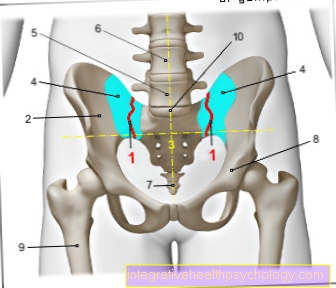That is the correct breathing when jogging
Why do I need a certain breathing technique while jogging?
Breathing is actually a vital process that is unconsciously controlled by the breathing center in the brain stem. By learning a certain breathing technique while jogging or other endurance sports, however, you can prevent side stitching and rapid fatigue.
Beginners in particular should learn the correct breathing technique in order to guarantee an optimal supply of oxygen to muscles and the brain while jogging.

Is there a perfect breathing technique for jogging?
Not every runner finds it necessary to adhere to a certain breathing technique while jogging. Certainly there is no such thing as “the perfect” breathing technique, after all, every runner differs in terms of physical fitness, lung volume and many other points. Nevertheless, there are a few tips that you should keep in mind, because only with an efficient oxygen supply can the muscles work properly and side stitches and premature fatigue can be prevented.
Correct inhalation supplies the body with oxygen; by exhaling we get rid of the excess carbon dioxide, which is especially produced during exertion. If you want to do everything right while running, you not only have to pay attention to the correct inhalation and exhalation, but also the depth of the breaths and the breathing rate. Learning an efficient breathing technique takes practice, but has many benefits in terms of performance, wellbeing and relaxation. So it is worthwhile to familiarize yourself with the tips on efficient breathing technique.
This article might also interest you: Improve stamina
Tips for better breathing while jogging
Various tips can help you breathe efficiently while jogging.
- deep breaths: When jogging, it is important to use abdominal breathing, also called diaphragmatic breathing. The diaphragm is tensed, the chest is enlarged downwards and the lungs are widened. In contrast to chest breathing, which is fast and shallow, the athlete breathes in and out deeply and can optimally ventilate the lungs. This in turn results in increased oxygen uptake.
- breathe in through your nose: It is important to breathe in through your nose when jogging, especially in winter. This humidifies and warms the inhaled air and prevents the bronchi from contracting due to the cold stimulus. In addition, the hairs filter dirt particles and bacteria from the air you breathe. However, the oxygen supply through nasal breathing is often insufficient at particularly high intensity, so that the athlete begins to inhale through the mouth. This can be an indication of excessive stress. In order to stay in the aerobic range, you should reduce the pace a little.
- Find personal breathing rate: The most common breathing rate is inhaling over three steps and exhaling over three steps. However, each person's lung volume is different, and the breathing rate also depends on the running speed. The coupling of breathing to the running rhythm is recommended, but every athlete should find out for himself the frequency at which breathing is carried out regularly, deeply and without excessive exertion.
- Patience: Especially newbies start their running training with high ambitions. However, physical fitness is built up over a longer period of time through regular units - if you get out of breath while running, you should reduce your speed. A good guideline is to be able to talk to a running partner while running.
Also read:
- Running style
- endurance
Avoid side stitches with proper breathing
A stitch or stitch is a clearly localized, stabbing pain below the chest that usually occurs on the right side. It occurs in endurance sports, but especially when jogging. Stitches in the side are extremely uncomfortable and may even require you to stop exercising. Young people in particular are affected by the stitch.
The cause of a stitch in the side has not been clarified; there are different theories about its development. A possible explanation is a high load on the diaphragm due to the deepened and accelerated breathing and a lack of oxygen in the muscle, which leads to the cramp-like pain. Poor basic endurance increases the risk of getting a stitch, as does running on a full stomach.
There are several strategies to reduce the risk of a stitch, including gradually increasing the intensity, good breathing technique, and banning high-carb and hypertonic drinks and juices immediately before exercising. Eating, especially in large quantities, should also be avoided.
If the pain in the side is acute, interrupting activity, taking a short break from walking, and taking deep breaths can help relieve the spasms of the diaphragm. A light massage of the affected area can also help with the side stitch.
Please also read:
- Side stitch - all you need to know
- Breathing exercises
Breathing in winter while jogging
Jogging in winter is a special challenge. In addition to the right clothing and shoes, correct breathing technique is of great importance. The cold air in winter can make breathing difficult because the bronchi contract when exposed to cold stimuli. So you get out of breath faster in winter, breathing can even be really uncomfortable.
Diaphragmatic breathing should also be used in winter, i.e. deep breathing into the stomach, not the chest. Breathing in through the nose is even more important. As a result, the dry, cold air is humidified and the mucous membranes of the respiratory tract dry out less quickly. It also warms the air and makes it easier for the bronchi to bear. An additional measure of protection can be a cloth or scarf over the mouth and nose. High intensities and the resulting mouth breathing should be avoided in the cold. As long as there are no previous bronchial diseases such as asthma or COPD, runs at temperatures as low as minus ten degrees are possible.
You might also be interested in this topic: Anaerobic training





























